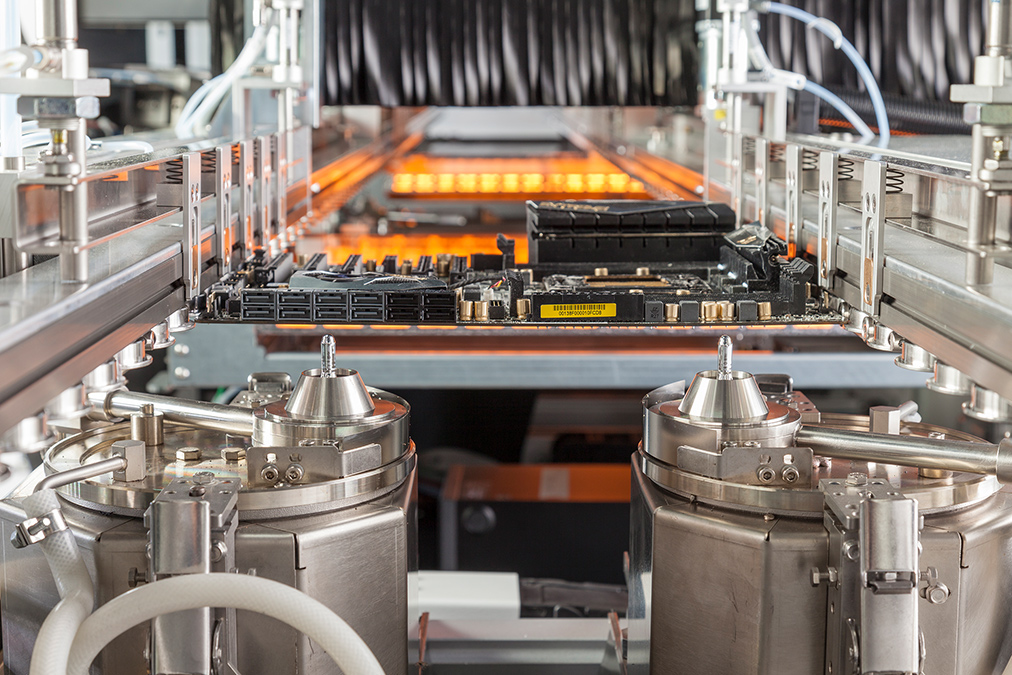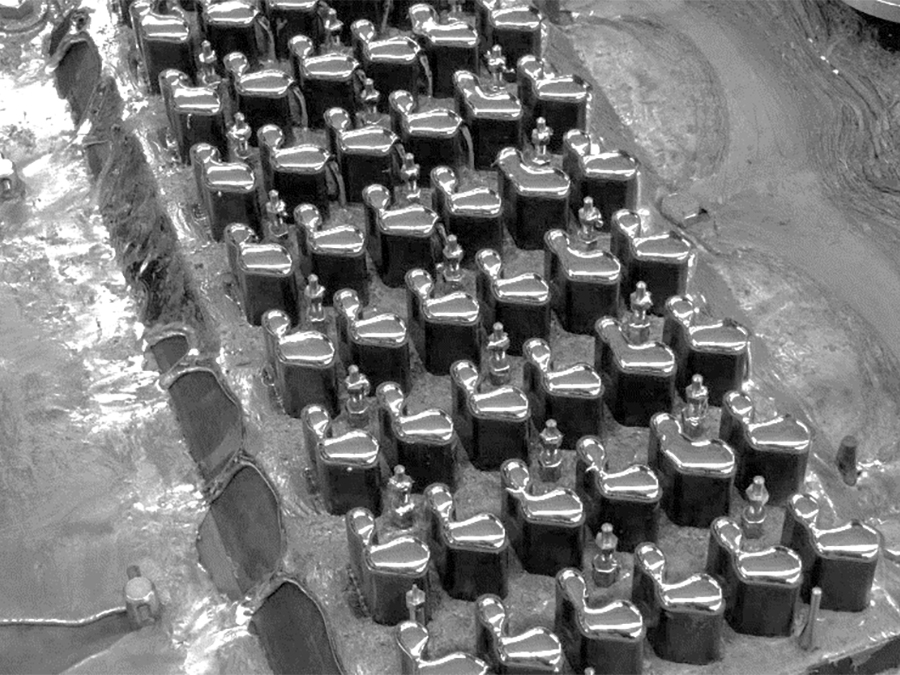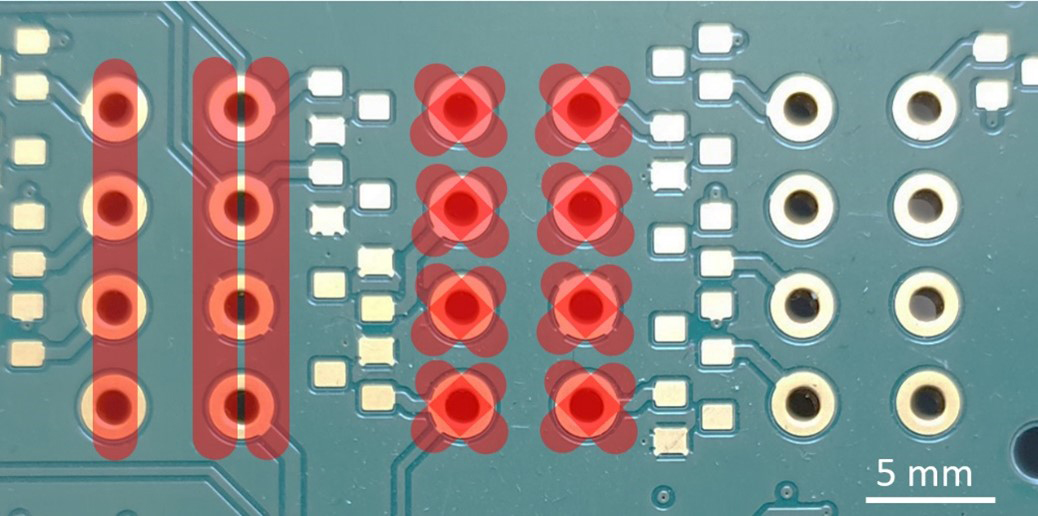

02/2024 | Technical article
The triumph of selective soldering is a mirror image of the development in electronics production. Products are becoming more diverse and complex, with requirements ranging from “fine pitch” to power electronics. 5G antennas require big board handling, smart home applications high throughput at low cost – and for automotive or medtech the requirement is simply: zero errors!
No other technology is better suited to meet this range of challenges than selective soldering. And no supplier offers a broader portfolio than market leader Ersa. From the entry-level SMARTFLOW and ECOSELECT series for small to medium series up to the VERSAFLOW 4 with versions for large assemblies or maximum throughput. Ersa offers the right machine for every requirement. New in the portfolio is the VERSAFLOW ONE line, which represents the new entry level in the proven and powerful technology of the VERSAFLOW series. All machines contain the know-how of Ersa. In the VERSAFLOW family, all machines are actually based on the same functional modules. Choosing the right machine is therefore not a question of quality, but only of throughput and flexibility.
Selective soldering is a soldering process in which, in contrast to classic wave soldering, only a small area of the assembly is wetted by solder. Thus, at the beginning, selective soldering was mainly a replacement for manual soldering when SMD components on both sides made wave soldering of THT components impossible. However, in the meantime, many other advantages are known that make selective soldering successful across the board.

The greatest advantage of selective soldering is its flexibility and exact adjustment. A different soldering time can be set for each solder joint. This allows an exact adaptation to the soldering heat requirement, the temperature input into the assembly can be reduced to the absolute minimum. Sensitive components such as film capacitors are less stressed thanks to lower temperatures, and neighboring components are heated to the preheating temperatures at the maximum. This reduces the temperature-related stress in the assembly and leads to longer operating lives. For systems such as the VERSAFLOW series with optional multiple solder pots, nozzle size and temperature can also be selected variably. This means that high-mass solder joints and temperature-sensitive components on the same assembly are no longer a problem. The optional VERSAFLEX ULTRA modules offer two independent pots in one and the same soldering module and create the absolute maximum freedom for process optimization with separate Z-axis.
Another advantage of selective soldering is the high level of cleanliness of the assembly after soldering. In modern systems, the flux is applied with extreme precision only where soldering takes place. This leads to good soldering results and high process reliability while minimizing residues after the soldering process. Otherwise, there are hardly any restrictions for selective soldering. Even very high-mass assemblies of power electronics or multilayers with high layers can be soldered safely today. Here, above all, a powerful preheater plays an essential role. Ersa offers a wide range of different preheating systems and configuration options for this purpose. Convection top heaters, for example, are in some cases also among the standard options in the soldering modules. Selective soldering does not require solder masks, the change to new products can be done very quickly. This makes the process ideal for high-mix/low-volume production in particular.

If a large number of pins needs to be soldered, for example boards with many components or large assemblies, selective soldering cannot always compete with mini-wave soldering in terms of cycle time. In such applications, sequential processing of the solder joints is at a disadvantage compared to simultaneous processing. But there are also solutions for this from Ersa. If there is a requirement for a very short cycle time, the multi-wave process is used. This is a dip soldering process where all pins are soldered simultaneously. Multi-wave soldering thus enables high throughputs by soldering times of a few seconds for the entire assembly. Each assembly requires a product-specific soldering tool – the nozzle plate. This is the only challenge of the process: One loses the flexibility of the mini-wave, since each product requires its own soldering tool, but at the same time has very high throughputs and achieves short cycle times.

The VERSAFLOW ONE is the new entry into the VERSAFLOW world of selective soldering. It offers inline technology at the price of a batch system. The ONE is the first system in its class to offer the option of two solder pots per soldering module, the distance between which can be manually adjusted in the direction of conveyance. Therefore, it is the ideal choice for small and series production of simple assemblies that require reliable technology with high throughput. The VERSALOW ONE includes all the features of the series and thus builds on Ersa´s decades of experience in selective soldering.
It has standard 3 mm pin chain transport and program controlled width adjustment for maximum flexibility and performance. The flux module uses the proven multidrop system with one or two flux heads and numerous options. The precision of the multidrop fluxer enables almost any geometry imaginable. The preheater is equipped with a short-wave IR bottom heating module in the basic version. Optional top heating with convection in the preheater is possible. Non-contact monitoring of the PCB temperature in the preheater guarantees maximum process reliability. Many automations such as automatic nozzle activation or solder wire feeding increase availability and thus throughput. Last but not least, they improve user guidance, which is also what the ERSASOFT 5 operating software is optimized for. In addition, the VERSAFLOW ONE has the latest smart features such as traceability and connectivity to the Kurtz Ersa CONNECT platform, making it a safe investment to be ready for future requirements in digitized electronics manufacturing.


With over 2,000 systems installed worldwide, the systems of the VERSAFLOW 3 series are the workhorses in the field of selective soldering technology. Extensive options are available in this product line, which allow the systems to be equipped with up to six solder pots in three soldering modules. The available options here are optimized for processing multi-panel PCBs by allowing the distance between the two solder pots to be adjusted to the panel offset. Alternatively, the solder pots can be equipped with different solder nozzle geometries or solder alloys, which opens up further advantages in the use of the systems. The selection of these options in the soldering program are semi-automatic.
Likewise, the flux range and the preheaters can be optimally adapted to the specific requirements of the customers and the individual applications of the electronic assemblies to be manufactured with numerous options. In the maximum configuration stages, cycle times and throughputs can be achieved that are otherwise only possible with wave soldering systems. At the same time, however, this offers the possibility of programming all solder joints on an assembly individually so that each solder joint only receives the thermal energy required for the soldering process. This reduces the temperature stress on the assemblies to a minimum, which in turn has a positive effect on the reliability of the assemblies.
Based on the features of the VERSAFLOW 3, the flagship VERSAFLOW 4 offers additional flexibility in the fluxing and soldering area. The optional Ultra-Flex modules in the fluxing and soldering modules are designed in such a way that two flux heads or solder pots are arranged on two separate axis systems operating independently of each other in a single module. For the processing of assemblies, the user has here the possibility of free use of the X, Y and Z variability. With automatic programming, this flexibility offers the highest level of variable operation possible anywhere. This variability is the reason why this system is virtually a standard in the production of solder-heat-intensive inverters for the e-mobility and PV industry. The soldering modules of the VERSAFLOW 4 are equipped with IP process cameras. These enable the setup control of the solder nozzle geometry, the solder wave height measurement as well as the wetting control of the solder nozzle surfaces by digital image processing. In addition, the process camera records a video of each soldering process, provided that the user activates this function.
Rounding off the spectrum of systems: The production islands frequently encountered in electronics manufacturing also requires powerful selective soldering systems that can be flexibly programmed to the user´s assembly spectrum, while at the same time requiring a small footprint. This area of selective soldering technology is covered by the ECOSELECT series. These systems are both inline and batch capable – meaning they can be loaded and unloaded at the same position. For the configuration of flexible manufacturing islands, this mode of operation represents a major advantage. The ECOSELECT fluxing, preheating and soldering process is sequential compared to the systems of the VERSALOW series, since there is only one assembly in the system for processing at a time.
Standard processes and qualification: The same functional elements are used in the fluxer, preheater and soldering module across the entire system spectrum, from ECOSELECT and VERSAFLOW ONE to VERSAFLOW 3 and 4. This has the great advantage for the user that a standard soldering process is available in all Ersa Selective Soldering Systems, which is compatible and thus interchangeable or comparable across the entire system spectrum. This gives the user the security of only having to qualify the selective soldering process once, if this is required by the customer.
Forecast: Whether electronic assemblies for in-ear headphones the size of a fingernail, 5G antenna systems with a length of three meters, thick copper circuit boards for power electronics or multilayers with high layers for communication technology – the selective soldering systems from Ersa, the world market leader, reliably cover these applications. Flexibility down to the individual process parameters for each solder joint as well as high demands on throughput and quality characterize the Ersa selective soldering systems. This variety of systems combined with a worldwide service network and individual process support gives Ersa customers the security for highest quality and availability at low costs and best economic efficiency at the same time. The decision for the world market leader in soldering technology pays off in every respect!